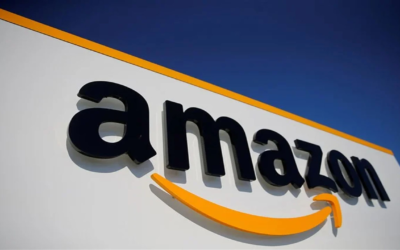As the world’s largest online retailer, Amazon offers a wide range of opportunities for entrepreneurs to start their own businesses. One such opportunity is using Amazon’s Fulfilled by Amazon (FBA) program for arbitrage. In this guide, we’ll cover the basics of using Amazon FBA for arbitrage and how you can get started.
Table of Contents
- What is Amazon FBA?
- What is Arbitrage?
- How does Amazon FBA for Arbitrage work?
- Why use Amazon FBA for Arbitrage?
- Setting up an Amazon FBA account
- Finding profitable products for Arbitrage
- How to analyze product data
- Sourcing products for Amazon FBA
- Shipping products to Amazon FBA
- Pricing your products for Arbitrage
- Managing your Amazon FBA account
- Avoiding common mistakes with Amazon FBA
- Scaling your Amazon FBA Arbitrage business
- Conclusion
- FAQs
What is Amazon FBA?
Amazon FBA is a program that allows sellers to store their products in Amazon’s fulfillment centers. Once a product is sold, Amazon handles the shipping, customer service, and returns on behalf of the seller. This service is available to sellers in over 100 countries and regions, making it easy to sell globally.
What is Arbitrage?
Arbitrage is the practice of buying products at a lower price and selling them at a higher price. In the context of Amazon FBA, arbitrage involves finding products that are being sold at a lower price on other online marketplaces or retail stores, and reselling them on Amazon at a higher price.
How does Amazon FBA for Arbitrage work?
To start using Amazon FBA for arbitrage, you need to first create an Amazon seller account and enroll in the FBA program. Once enrolled, you can start sourcing products from other marketplaces or retail stores that are being sold at a lower price. You can then list those products on Amazon at a higher price and use Amazon FBA to fulfill those orders.
Why use Amazon FBA for Arbitrage?
Using Amazon FBA for arbitrage offers several advantages. Firstly, it allows you to take advantage of Amazon’s vast customer base and infrastructure. Amazon is a trusted brand and has millions of customers worldwide, making it easier to sell your products. Additionally, using Amazon FBA means you don’t have to worry about storage, shipping, and handling, as Amazon takes care of all that on your behalf.
Setting up an Amazon FBA account
To start using Amazon FBA for arbitrage, you need to first create an Amazon seller account. You can do this by visiting sellercentral.amazon.com and following the instructions to sign up. Once you have created your seller account, you can enroll in the FBA program by clicking on the “Fulfillment by Amazon” tab in your seller account.
Finding profitable products for Arbitrage
The key to success with Amazon FBA for arbitrage is finding profitable products to sell. To do this, you need to research the market and find products that are in high demand but are being sold at a lower price on other marketplaces or retail stores. You can use tools like Jungle Scout, Helium 10, or Keepa to help you with your research.
How to analyze product data
Analyzing product data is an important part of finding profitable products for Amazon FBA arbitrage. You should look at the product’s sales rank, price history, and customer reviews to determine whether it’s a good product to sell. Tools like Jungle Scout and Keepa can help you with this analysis.
Sourcing products for Amazon FBA
Once you have identified profitable products for arbitrage, you need to source them. There are several ways to do this, such as:
- Online arbitrage: This involves buying products from online marketplaces like eBay, Walmart, or Target, and reselling them on Amazon.
- Retail arbitrage: This involves buying products from brick-and-mortar retail stores like Walmart or Target, and reselling them on Amazon.
- Wholesale arbitrage: This involves buying products in bulk from wholesalers and reselling them on Amazon.
- Private label: This involves creating your own brand and products to sell on Amazon.
Shipping products to Amazon FBA
Once you have sourced your products, you need to ship them to Amazon’s fulfillment centers. Amazon provides guidelines on how to pack and label your products for shipping, and you can use Amazon’s discounted shipping rates to send your products to their warehouses.
Pricing your products for Arbitrage
Pricing your products correctly is crucial for success with Amazon FBA arbitrage. You need to factor in the cost of the product, shipping, Amazon fees, and your desired profit margin when setting the price. You should also keep an eye on the competition and adjust your prices accordingly.
Managing your Amazon FBA account
Managing your Amazon FBA account involves monitoring your inventory levels, responding to customer inquiries and feedback, and analyzing your sales data. You should also stay up-to-date with Amazon’s policies and guidelines to ensure that you comply with their rules.
Avoiding common mistakes with Amazon FBA
There are several common mistakes that sellers make when using Amazon FBA for arbitrage. These include not conducting proper research, pricing products too high or too low, not optimizing product listings, and not managing inventory levels properly. It’s important to avoid these mistakes to ensure success with Amazon FBA arbitrage.
Scaling your Amazon FBA Arbitrage business
Once you have established a successful Amazon FBA arbitrage business, you can scale it up by expanding your product range, investing in advertising, or exploring other marketplaces. You can also consider hiring virtual assistants or using software tools to streamline your operations and increase efficiency.
Conclusion
Using Amazon FBA for arbitrage can be a profitable and rewarding business opportunity for entrepreneurs. By following the steps outlined in this guide, you can start sourcing profitable products, shipping them to Amazon’s fulfillment centers, and selling them on the world’s largest online retailer. With proper research, careful planning, and attention to detail, you can build a successful Amazon FBA arbitrage business.
FAQs
- Is it legal to use Amazon FBA for arbitrage?
Yes, it is legal to use Amazon FBA for arbitrage as long as you comply with Amazon’s policies and guidelines.
- How much does it cost to use Amazon FBA for arbitrage?
The cost of using Amazon FBA for arbitrage depends on several factors, such as the size and weight of your products, the number of units you store, and the duration of storage.
- What are some tools I can use for Amazon FBA arbitrage?
Some popular tools for Amazon FBA arbitrage include Jungle Scout, Helium 10, Keepa, and Tactical Arbitrage.
- How do I know if a product is profitable for Amazon FBA arbitrage?
You can determine whether a product is profitable for Amazon FBA arbitrage by analyzing its sales rank, price history, and customer reviews.
- Can I use Amazon FBA for arbitrage if I live outside the US?
Yes, Amazon FBA is available to sellers in over 100 countries and regions, making it easy to sell globally.





0 Comments